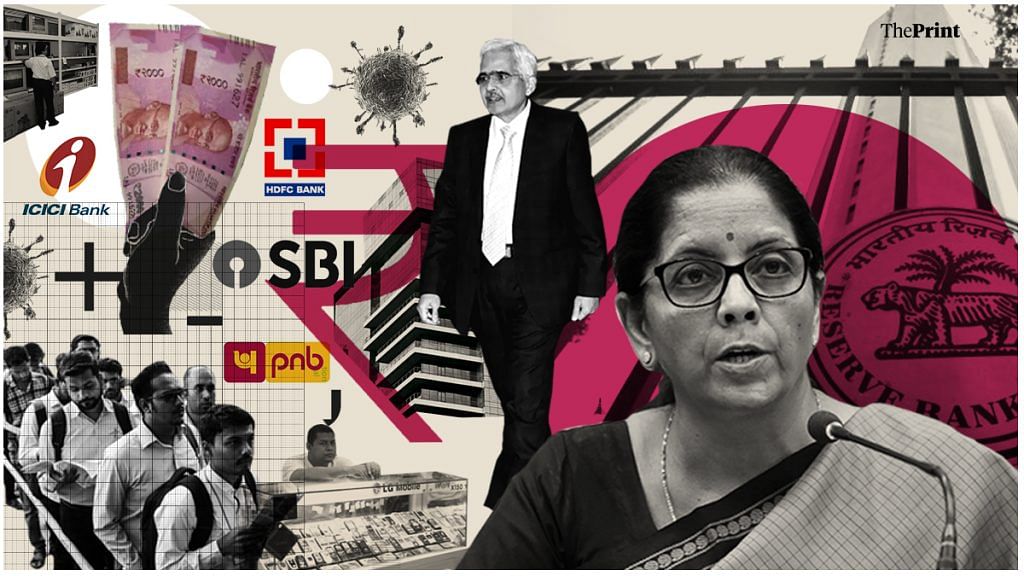The Reserve Bank of India, in its latest statement on developmental and regulatory policies, announced a scheme for one-time restructuring of loans to help borrowers manage the stress caused by the Covid-19 pandemic. The restructuring of loans has been allowed for retail, MSME and corporate loans.
The intent of the scheme is to help those borrowers who were on track to repay loans but are unable to because of the adverse impact of the Covid-19 lockdown on their businesses. A number of checks and balances have been introduced to prevent a repeat of the previous episodes of loan restructuring, which did not succeed in addressing the NPA crisis but instead led to a widespread strategy of ‘extend and pretend’, where banks kept on extending fresh loans to ailing companies, even as they struggled to repay old debts.
For corporates, the scheme is applicable to only those borrower accounts which were classified as standard, and not in default for more than 30 days, as on 1 March 2020. The invocation of restructuring has to be implemented by 31 December 2020. A host of disclosure requirements have been laid out for banks, and for big loans, an expert commitee has been set up to undertake process validation of loan restructuring.
Also read: Why Modi govt has made a good call to move out of all non-strategic sectors
A needed move
The move to announce a one-time restructuring of loans was needed to support the firms adversely impacted by the Covid-19 pandemic. The RBI had earlier announced an across-the-board moratorium for six months, from 1 March 2020 to 31 August 2020, for borrowers.
But bankers, of late, had said the moratorium should not be extended, and they should be given greater flexibility to recast their loans where necessary.
Loan restructuring intends to provide flexibility to banks, and was needed as there is a risk of banks’ NPAs rising by alarming proportions by the end of the year. According to the RBI’s Financial Stability Report, the banks’ NPAs, which, until now, were showing a declining trend, are estimated to rise to 12.5 per cent by March, 2021. If the economic environment worsens further, the NPAs are estimated to rise to 14.7 per cent.
A recent study estimates that debt worth Rs 3 lakh crore is at risk of slipping into NPAs due to Covid-19, unless restructured by banks. A scheme that will allow banks to not classify the non-repayment of loans as NPAs under certain conditions would provide relief to them.
Non-financial firms
The financial performance of the non-financial listed firms presents a worrying picture.
While sales of non-financial firms have been contracting since September 2019, the magnitude of contraction saw a spike of 37 per cent in the April-June quarter, the first since the lockdown was imposed. The after-tax profit of such firms decelerated to 92 per cent in the April-June quarter, suggesting that their financial performance had been adversely impacted by the lockdown.
Measures to support businesses in these troubled times are necessary, as this is not the consequence of owners’ or managers’ decisions, but a pandemic. Guaranteed loans to MSMEs, loan moratorium and now one-time restructuring of loans are steps to ease pain of both lenders and borrowers.
Also read: Why India has increased economic freedoms in response to Covid, unlike Europe & US
Benefit for borrowers
A loan restructuring scheme helps borrowers to the extent that they can delay repayment of interest and principal amount, or repay loans at easy terms and conditions. These measures help address their immediate revenue losses.
However, as the RBI’s Financial Stability Report points out, sectors such as tourism, hospitality and aviation have been most adversely impacted due to the Covid-19 pandemic. These are sectors whose prospects depend on discretionary consumption spending.
The latest round of RBI’s consumer confidence survey indicates that most respondents do not expect to increase non-essential spending in the coming year as well. This shows that the recovery prospects of these sectors are bleak in the next few months.
Unless demand picks up, their ability to repay loans would remain impaired. A loan recast scheme would not be enough for them.
The government now needs to prepare a plan on how to address the issue of their loans and defaults in the coming months.
Ila Patnaik is an economist and a professor at National Institute of Public Finance and Policy.
Radhika Pandey is a consultant at NIPFP.
Views are personal.
Also read: How Modi govt’s ordinance on cooperative banks can prevent PMC-like scams, protect depositors
